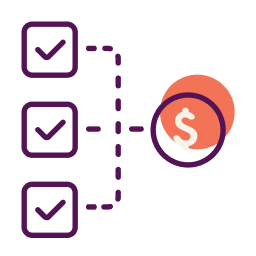For small business owners, an SBA loan is one of the most desirable and sought-after financing options when they’re looking to expand in one way or another. According to business credit expert Gerri Detweiler, “SBA loans can offer your business competitive interest rates and repayment terms. They can be especially attractive to businesses that are growing but are having trouble getting traditional financing because they don’t have a lot of collateral.”
SBA loans typically require lower down payments and have more flexible interest rates and terms than comparable small business loans, reducing the overall cost of the financing. Like with any other type of financing you may seek in your life, it’s important to understand what to expect before diving into the process.
Before you apply, it’s important to check both your personal and business credit scores to see where you stand. You can check them both for free with Nav.
The SBA Loan Process
To begin, you’ll typically have to go in for a meeting with the lender, who will be looking to learn about your business. They’ll want information about what your business does, the industry you operate in, your cash flow, and why you’re looking for a loan. Keep in mind that this is also your opportunity to learn about the bank. Consider preparing your own questions ahead of time to determine if this particular lender is one you feel comfortable doing business with.
“After the initial meeting, the lender requests various information from the prospect to explore the loan request from a preliminary standpoint” said Scott Amatuccio, Vice President SBA Manager at Axiom Bank in Maitland, Florida. “At this point the lender typically evaluates cash flow of the business, collateral, and the best SBA loan product to meet the need of the borrower. A prudent lender determines at this phase if the loan request is within the bank’s credit appetite. It’s important that the lender completes this preliminary analysis efficiently to be mindful of the prospect’s time.”
At this point, the lender will typically issue a loan proposal to the borrower, which will outline important details of the loan and should be reviewed closely. You’ll find information like the borrower, guarantor, loan amount, loan type, term, collateral to secure the loan, interest rate, use of the loan proceeds and source of down payment. If the proposal works for the you, you’ll accept it, the lender will request documentation, and the loan will begin the underwriting phase. “An experienced lender knows exactly what to request to ensure the loan is underwritten efficiently. Depending on the complexity of the loan and the bank’s staffing, underwriting typically takes 1 to 3 weeks” says Amatuccio. The underwriting clock doesn’t begin until all requested documentation is received, so it’s important to get the documents to the lender efficiently.
The lender will generally ask for the following for the underwriting process:
- Your business and personal tax returns (typically three years’ worth)
- Year-to-date financial statements
- Personal financial statement on SBA Form 413
- Debt schedule for any existing business loans
- Management resume
- Contracts related to the loan request
In the case that your entity has been in business for less than two years, you will likely also need to provide a business plan and financial projections, especially if your current cash flow doesn’t support the loan request. The SBA will also require a completed 1919 Borrower Information Form and 4506-T to verify tax transcripts.
While the list of required documents may seem extensive, the lender will need the documentation to not only determine the entity’s creditworthiness, but also to show due diligence to the SBA. Once the underwriting process is completed, both the bank and the SBA will review the application for final approval. If your bank is a Preferred Lender Partner with the SBA, the SBA will defer their review process to the bank, which shortens the wait time by two to three weeks. The final closing procedures between the lender and borrower can then take anywhere from 30 days to several months, depending on the loan.
As you look to grow and expand your business, an SBA loan could be a great option for you. Take the time and do your own due diligence before applying to make the process as smooth and efficient as possible so you can get to work making your business great.
This article was originally written on May 17, 2018 and updated on October 20, 2020.



Have at it! We'd love to hear from you and encourage a lively discussion among our users. Please help us keep our site clean and protect yourself. Refrain from posting overtly promotional content, and avoid disclosing personal information such as bank account or phone numbers.
Reviews Disclosure: The responses below are not provided or commissioned by the credit card, financing and service companies that appear on this site. Responses have not been reviewed, approved or otherwise endorsed by the credit card, financing and service companies and it is not their responsibility to ensure all posts and/or questions are answered.